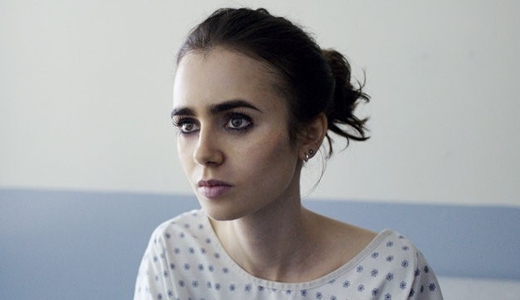A confession: I don’t understand eating disorders. I get the desire to be thin. But I don’t get the compulsion to starve oneself, or to binge and then purge, or to do any of the many, many things that those with eating disorders do to become so very, very skinny.
So when I watched Netflix’s To the Bone, a new movie-length drama about Ellen, a young woman struggling with a life-threatening eating disorder, the woman’s sister spoke for me.
“I don’t really get it,” she says during a group therapy session. “Just … eat.”
It’s not that simple for Ellen. And anyone who suffers an eating disorder would likely say the same. “Just eat?” That’s perhaps like telling a depressed person, “Just cheer up!”
So maybe I’m not the right person to say whether To the Bone is—as it’s intended to be—a cautionary tale that could be a catalyst for positive change, or whether it might in fact glamorize the very disorders it means to critique and condemn.
Perhaps the show itself even understands the tricky tightrope it means to walk.
It should: Marti Noxon, the film’s director, based To the Bone on her own experiences with eating disorders. “People talk about control as an issue with anorexia, especially, but control is just the top layer,” she told indiewire.com. “What’s underneath that is not wanting to feel your feelings. We all use stuff not to feel our feelings.”
Lily Collins, who plays Ellen, has also struggled with eating disorders in the past—struggles she details painfully in her memoir Unfiltered: No Shame, No Regrets, Just Me. The former model’s disorder went well beyond just losing weight: “My hair and nails became brittle,” she wrote. “My throat burnt and my esophagus ached. My period stopped for a couple of years. … I was convinced that I had [messed] myself up beyond repair.”
These two people know how damaging eating orders can be, surely. To the Bone was made, it seems, with an eye toward healing and helping others who struggle similarly.
Yet to play the role, Collins had to lose a scary, unhealthy amount of weight. And while some actors are well-known for being able to gain or lose weight depending on the role (Christian Bale, I’m looking at you), there’s something deeply disturbing about a former anorexic starving herself to play an anorexic.
Indeed, Project Heal, an eating disorder nonprofit that was consulted for To the Bone, slammed the film. “We in no way intend to endorse the idea that people with anorexia nervosa can lose weight safely,” the organization said in a statement. “There is strong research showing that getting into a state of negative energy balance and/or losing weight can make people who have struggled with anorexia nervosa much more prone to a relapse.”
And remember, this is a subculture that sometimes sees skeletal as sexy—a reality that the movie acknowledges. We learn that Ellen is not just anorexic, but an anorexic artist who became a minor celebrity for her drawings of malnourished people on Tumblr. We learn that one of her fans was so inspired by Ellen’s work that she took her own life and dedicated her suicide letter to Ellen. Certainly, for some folks with an eating disorder, Collins’ transformation for the role might not represent a cautionary story at all, but rather an aspirational metamorphosis.
But who are we kidding? In a culture that fetishizes the thin, you don’t need to be anorexic to come away with exactly the wrong message. In her IndieWire interview, Noxon said:
Lily looked like death‐warmed‐over during parts of the shoot and women would come up to her and say, “What’s your secret? You look amazing!” If she’d told them she ate a brick and it was agonizing to pass it every day, I think half would have said, “Which brick? Can I get it a Trader Joes?” That’s the sad reality of our society right now, and so much of why we hope this film starts a deeper conversation.
There’s already been a lot of critical blowback on Noxon’s film. And some of its fans love it for all the wrong reasons. Some have reportedly reacted to the film much as To the Bone’s fictional anorexics reacted to Ellen’s art. “It was a little bit of a house of mirrors,” Noxon acknowledged in BuzzFeed.
To the Bone is an incredibly difficult film to watch: It contains 25 or so f-words (and lots of other profanity, too) and one scene where we see a emaciated Collins lie naked in a fetal position in the middle of a desert (critical parts are covered). But the most difficult content for me wasn’t the language or nudity, but simply watching Ellen and her suffering peers do terrible things to their bodies as they strive for some perverse picture of beauty.
For me, it was horrifying. It served as the cautionary warning it was meant to be, I suppose.
But for those who know, firsthand, what an eating disorder looks like? Feels like? People who are at risk for developing one or relapsing back into one? They may see an entirely different movie than I did—and one that’s exponentially more dangerous.
For more information from Focus on the Family on this important subject, be sure to check out our article “The Truth About Eating Disorders” as well as our “Eating Disorders Resource List.” We also recommend author Christie Pettit’s book Empty: A Story of Anorexia.






Recent Comments